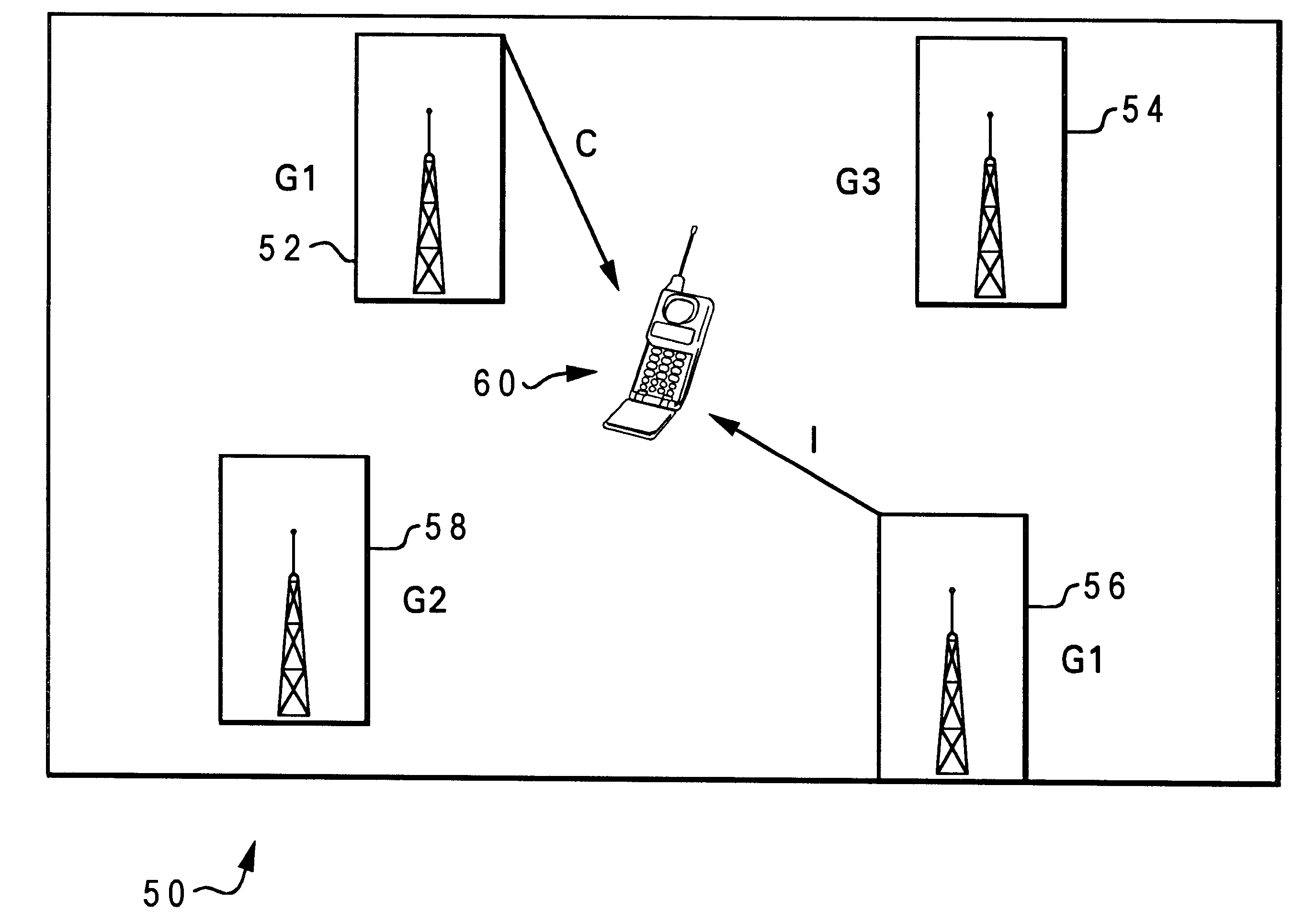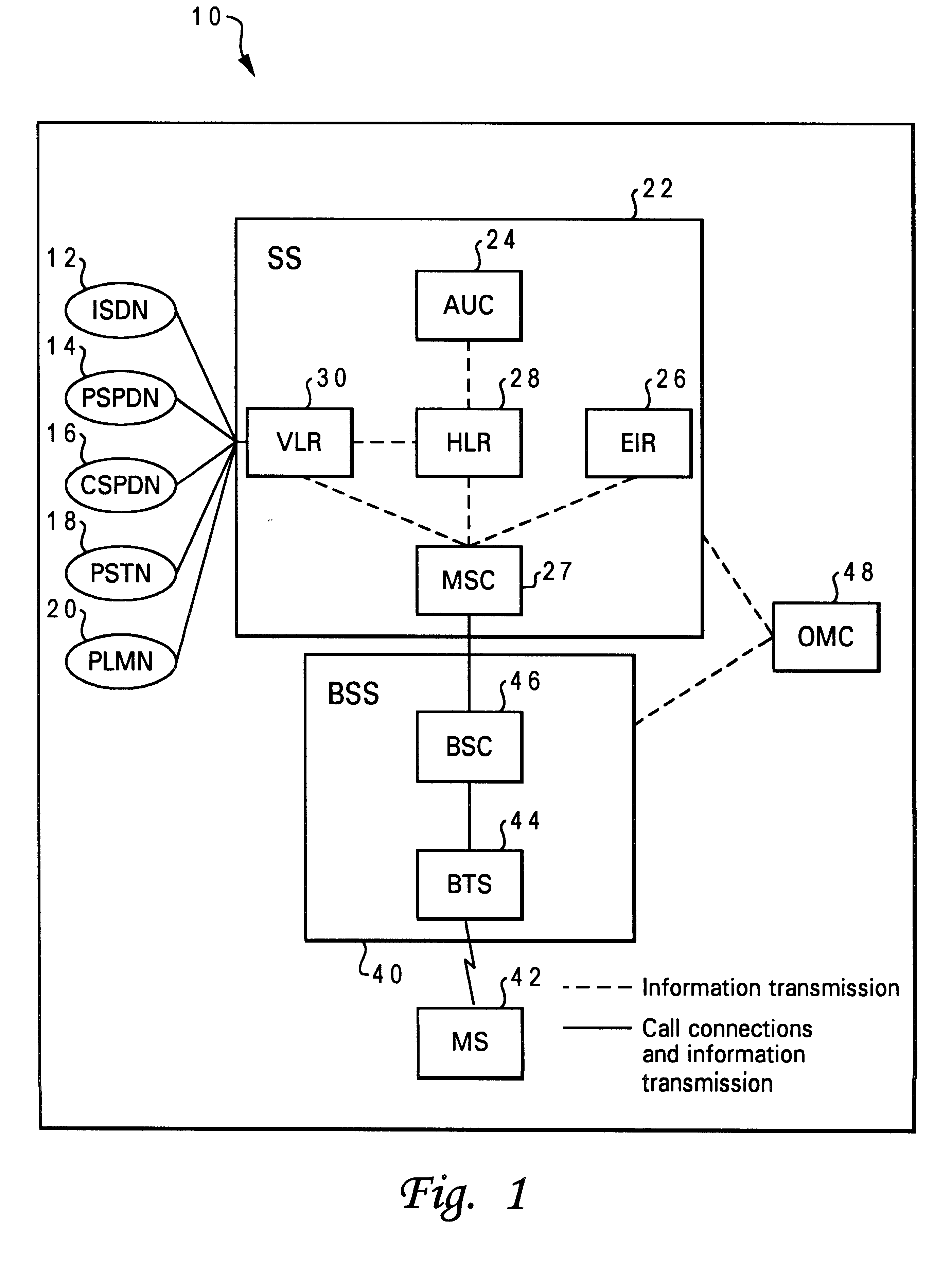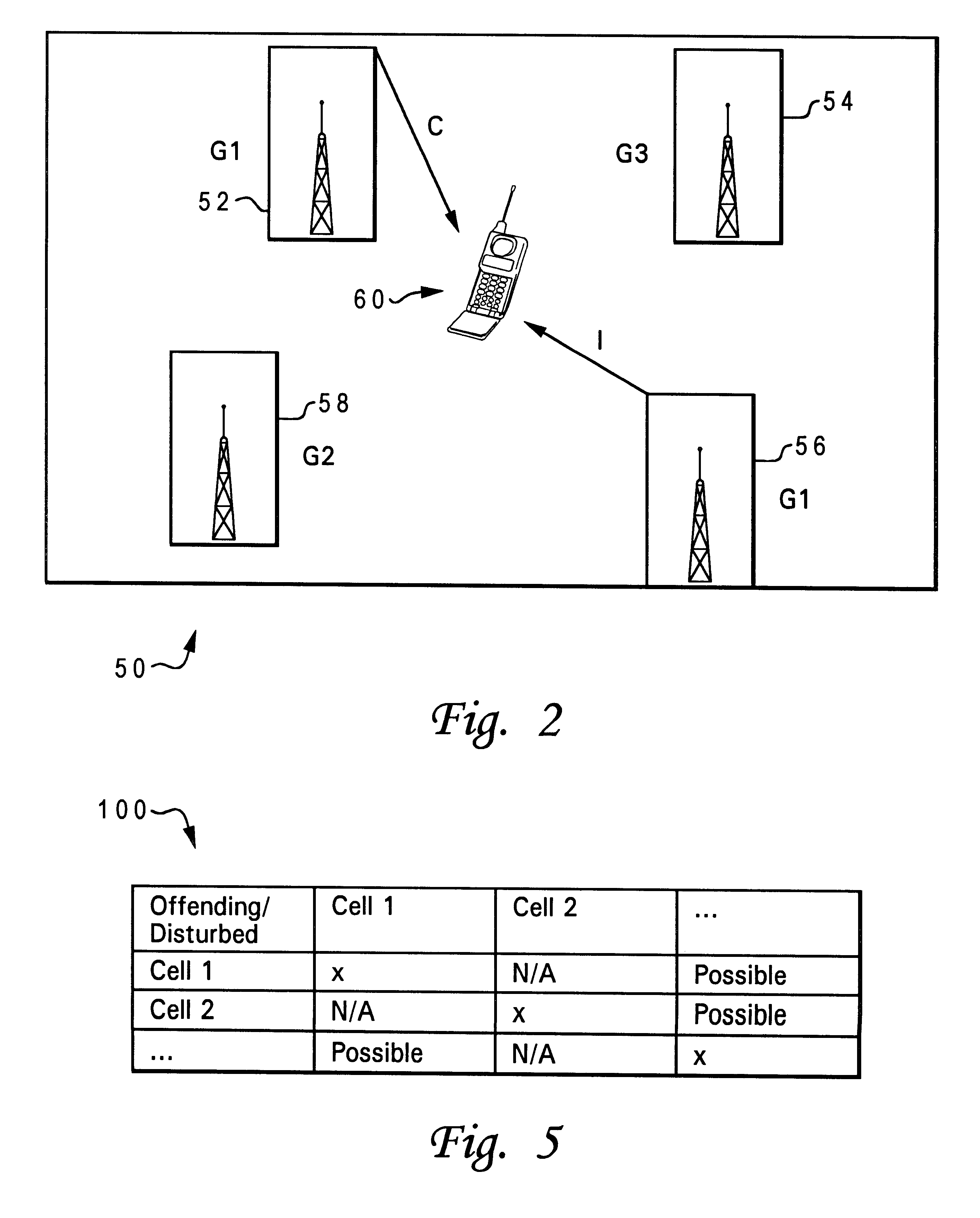Method and system for identifying and analyzing downlink interference sources in a telecommunications network
a technology of interference sources and telecommunications networks, applied in the field of wireless telecommunications networks, can solve problems such as poor communication customer satisfaction, radio disturbance, and inability to analyze downlink interference sources, and achieve the effects of improving communication quality, reducing interference, and improving service li
- Summary
- Abstract
- Description
- Claims
- Application Information
AI Technical Summary
Benefits of technology
Problems solved by technology
Method used
Image
Examples
Embodiment Construction
Reference is now made to FIG. 1, wherein a block diagram illustrates a telecommunications network 10 in which a preferred embodiment of the present invention may be implemented. Telecommunications network 10 depicted in FIG. 1 is divided into a Switching System (SS) 22 and a Base Station System (BSS) 40. Each of these systems contains a number of functional units, which process information and carry out operations of a functional telecommunications network. The functional units themselves may be implemented utilizing various telecommunications hardware devices.
Switching System (SS) 22 is composed of a Visitor Location Register (VLR) 30, a Home Location Register (HLR) 28, an Authentication Center (AUC) 24, an Equipment Identity Register (EIR) 26, and a Mobile Switching Center (MSC) 27. Base Station System (BSS) 40 is composed of a Base Station Controller (BSC) 46 and a Base Transceiver Station (BTS) 44. An Operations and Maintenance Center (OMC) 48 is connected to equipment present w...
PUM
 Login to View More
Login to View More Abstract
Description
Claims
Application Information
 Login to View More
Login to View More - R&D
- Intellectual Property
- Life Sciences
- Materials
- Tech Scout
- Unparalleled Data Quality
- Higher Quality Content
- 60% Fewer Hallucinations
Browse by: Latest US Patents, China's latest patents, Technical Efficacy Thesaurus, Application Domain, Technology Topic, Popular Technical Reports.
© 2025 PatSnap. All rights reserved.Legal|Privacy policy|Modern Slavery Act Transparency Statement|Sitemap|About US| Contact US: help@patsnap.com



